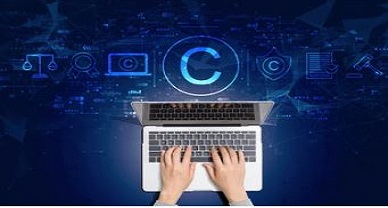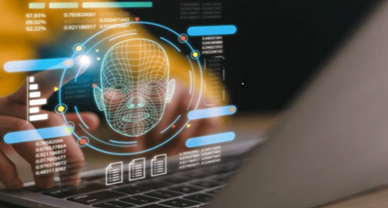Al and Copyright Complications
“Sometime early in this century, the intelligence of machines will exceed that of humans. Within a quarter of a century, machines will exhibit the full range of human intellect, emotions, and skills, ranging from musical and other creative aptitudes to physical movement. They will claim to have feelings and, unlike today’s virtual personalities, will be very convincing when they tell us so.” – Ray Kurzweil (2008).
Whether it is the Indian Copyright Act, 1957 or the Patents Act 1970, most Indian legislations find their roots in the British colonial administration. At that time, technology was not as advanced as it is now. Machines were simply used to assist humans in their work. However, reality has drastically changed now with the increasing use of Artificial Intelligence (AI) in our daily lives. Whether it’s applications like Prisma and Google Deep Dreams which work on strong neural networks to produce stunning creations of art or weak AIs consisting of chat-bots like Siri or Alexa, we are being increasingly surrounded by technological advancement and AI is a paramount part of it.
The idea of copyrights or other intellectual-property rights being conferred upon humans is based on the traditional approach and all the existing legislations are drafted according to it. However, with the progression of our society, original works are being created by non-human entities and this makes the idea of ‘authorship’ and ‘copyright owner’ more confusing. If we look at the celebrated case of the ‘Monkey Selfie’ wherein the monkey accidentally clicked a selfie from a photographer’s camera and PETA approached the court on the monkey’s behalf for assigning him the copyright for the selfie, problems like these become evident. Although this issue got settled out-of-court, how the court would have adjudicated in the matter remains unanswered.
A.I music-making industry is also a widely recognized phenomenon today. Verbasizer was the first such application that took literary source material as input and reordered the words to come up with an original song. Amper, on the other hand, is the latest application with a highly convenient interface and creates new songs on the spot. These applications are based on deep learning networks wherein the AI is fed with a multitude of source material (songs in this case) which further analyzes and learns the patterns of the inputs and in turn produces brand new creations. The legal question concerning ‘authorship’ of the song being given to either the software or the human creator of the software or the original lyricist of the songs given as input develops here.
The question which these instances pose before we are whether non-human entities for example, A.I, can be given authorship and hence copyrights over their creative works. This hypothetical situation was depicted in the critically acclaimed Hollywood movie, Her. Samantha, the Operating System with a female voice, in the course of her interaction with her owner, collects a few letters written by him and later compiles and gets them published into a book. The argument that was not discussed in the movie is whether the copyright for those letters, published under the name of Theodore (the human lead), should be assigned to the human, the AI Samantha, or to no one at all?
Here, the legal complexity arises as to who will be assigned the copyright. Some might advocate the application of Section 17 of the Indian Copyright Act, which involves work for hire situations and employer-employee relationships wherein the maker of the computer program that produced the art should be attributed the authorship; however this is a very narrow approach as it fails to identify machines as creators of original work.
Given the gap in IP laws with respect to creations by AI, certain alternatives are being offered. They include copyright being disallowed completely for any creation by a machine or giving the authorship just to the software. The first alternative arises out of the traditional idea of only humans being creators of any creative work. This approach might spare the court from crediting inanimate objects with the potential to formulate and express ideas but it depicts the laid-back approach of the legal system where it has no available recourse to comply with any modulation in the copyright laws when required. Moreover one must also look behind the social intention of IP laws which primarily is incentivizing innovation and creativity. Improving copyright laws while recognizing machines as creators of work would incentivize people to develop and disseminate new AI products.
The fresh and intermediary approach that is being discussed by the courts is a theory originally created by Timothy Butler, one in which the court creates a fictional human. If any case that comes to the court where work has been created by any AI, the court shall create a fictional human author and provide it the authorship. This approach has several benefits. Firstly, it maintains that the ideas cannot be formed by machines and keep up with the traditional approach of the author being a human and the creation, a result of the author’s ‘intellectual labor’. This way the court would not have to deal with the problem of floodgates with cases of non-human entities being conferred copyrights. It also keeps up with the policy/incentive-based aspect of the copyright law as the copyright will be available on the machine-created works instead of out-rightly rejecting it as discussed in the first alternative. However, Butler’s theory has been criticized for requiring necessary litigation over each individual work.
There have been further developments in this theory as well. At this point, it becomes imperative to say is that with the drastic advancement in technology, the legal implications and recourses should be kept updated. Whether it’s the creation of a fictional human or an even better alternative, the legal processes should continue to evolve with the ever-advancing technology.
Author: Apoorv Dixit, a third-year student at NALSAR University of Law. Member of the Tech Law Forum at Nalsar, Intern at IP and Legal Filings, and can be reached at support@ipandlegalfilings.com.


